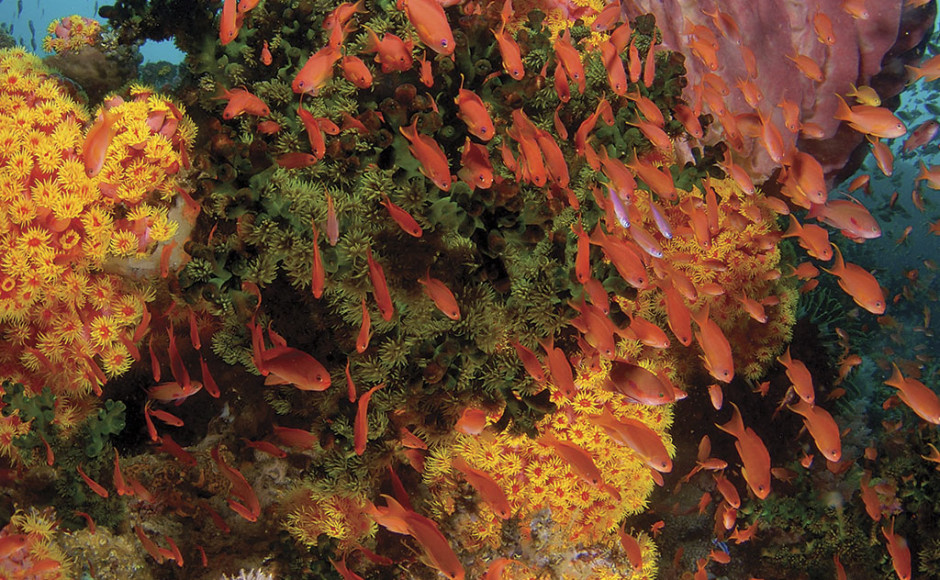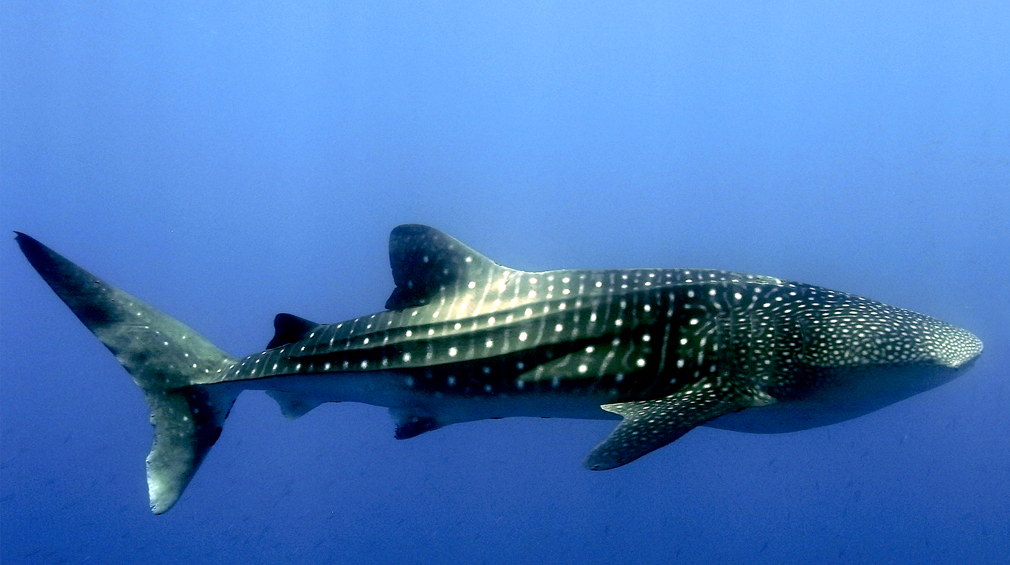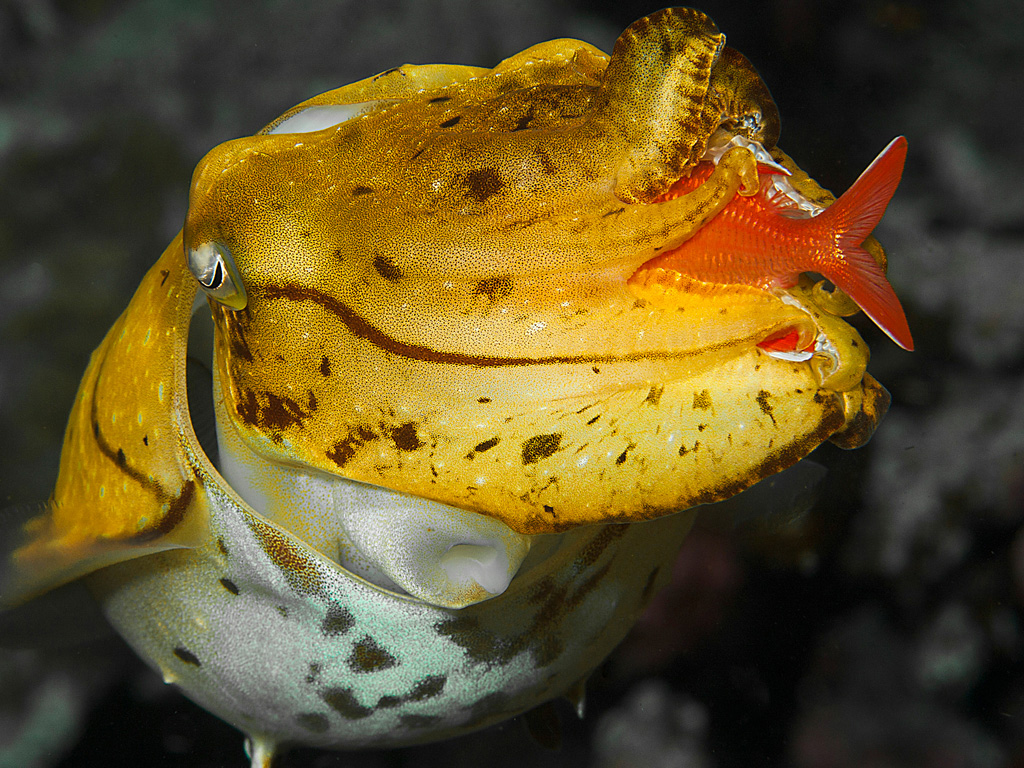Look Back!
With all there is to explore and find on the reefs of Wakatobi, it’s smart to check your surroundings often. And yes, do look back!
When diving or snorkeling Wakatobi’s reefs, teeming with wondrous and colorful marine life, finding the tiniest, most bizarre critters can quickly turn into a highly addictive passion. While our heads are often firmly engrossed in life among the coral jungle, you can’t help but wonder what sometimes goes on behind your back…. or just who might be having a look at you.
Sometimes it pays to maintain a good sense of what takes place in your surroundings, because after all, this is a three dimensional world. Marine life will pass above and below, as well as by you, even when you happen to be looking in the opposite direction.
For example, late in 2012 while cruising along the edge of the reef’s drop off many guests were lucky enough to encounter a beautiful whale shark on the move. At first many of the divers were not even aware of the giant visitor unafraid and curious of the group as he came swim along behind them!
The whale shark, Rhincodon typus, has a lifespan of about 70 years. It is a slow-moving filter feeding shark, which originated approximately 60 million years ago! Up to over 12m long, this is the largest extant fish species. It’s an awe-inspiring moment for any water lover to swim with this great creature. Encounters with the whale shark can also sometimes terrify divers, although it shouldn’t; this gentle giant has a very large mouth, but is just a filter feeder, consuming mainly, though not exclusively, plankton.
However, while it’s a tough call to constantly scan the open with one eye, it’s still smart to keep the other eye on the reef searching for the fascinating “small stuff.” Our resident darlings, the evasive Pygmy seahorses are hard to spot, but once you find one, you’ll understand why every diver is forever smitten.
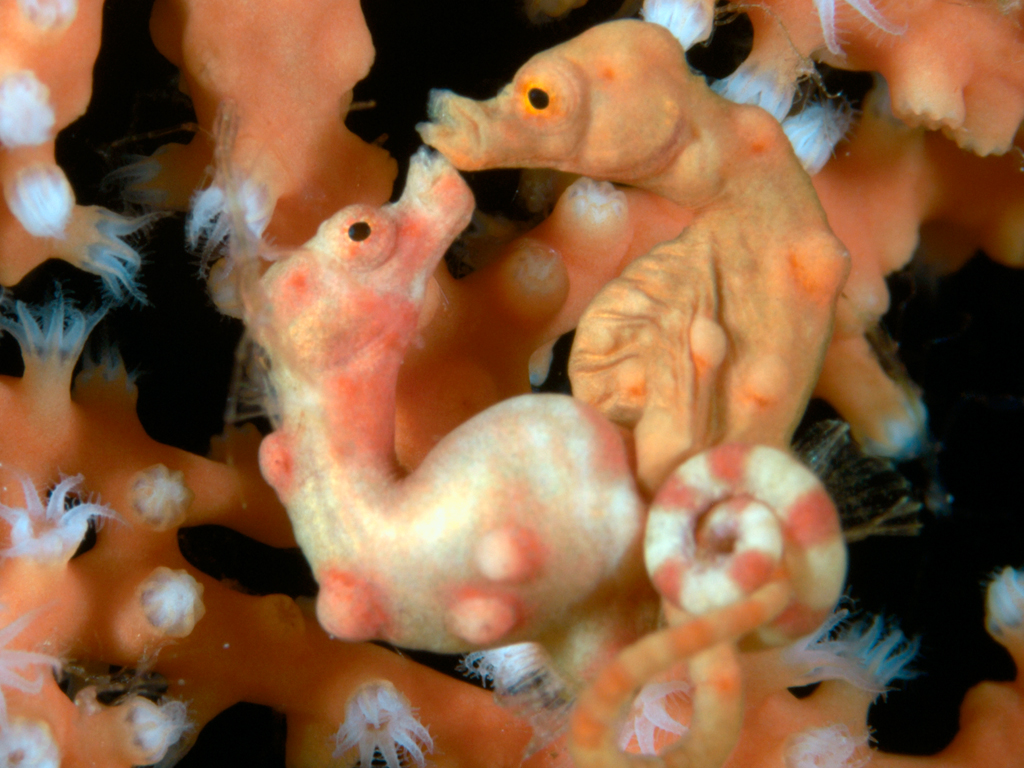
Courting, mating, swimming about their sea fan home, pygmy seahorses like these Denise pygmys, are a joy to watch.
photo by Wakatobi guest Richard Smith
A diver with good buoyancy, who can hang peacefully in the gentle current, can watch a pair of these tiny seahorses for as long as a tank will allow. With most pygmy seahorses at less than 1cm from head to toe, a sharp eye is required to witness this amazing spectacle.
Looking at the fascinating macro life and tiny critters at Wakatobi is completely mesmerizing. Never disappointing, always there, the creatures’ behavior is as fascinating as their looks. The Orangutan crabs are aptly named not just for their appearance, but for their behavior. With one long, hairy arm, the large male lazily scratches his belly… but while we watch, fascinated, we should never forget to scan the horizons from time to time! For example, sea turtles will often cruise overhead or show up behind you when you least expect it.
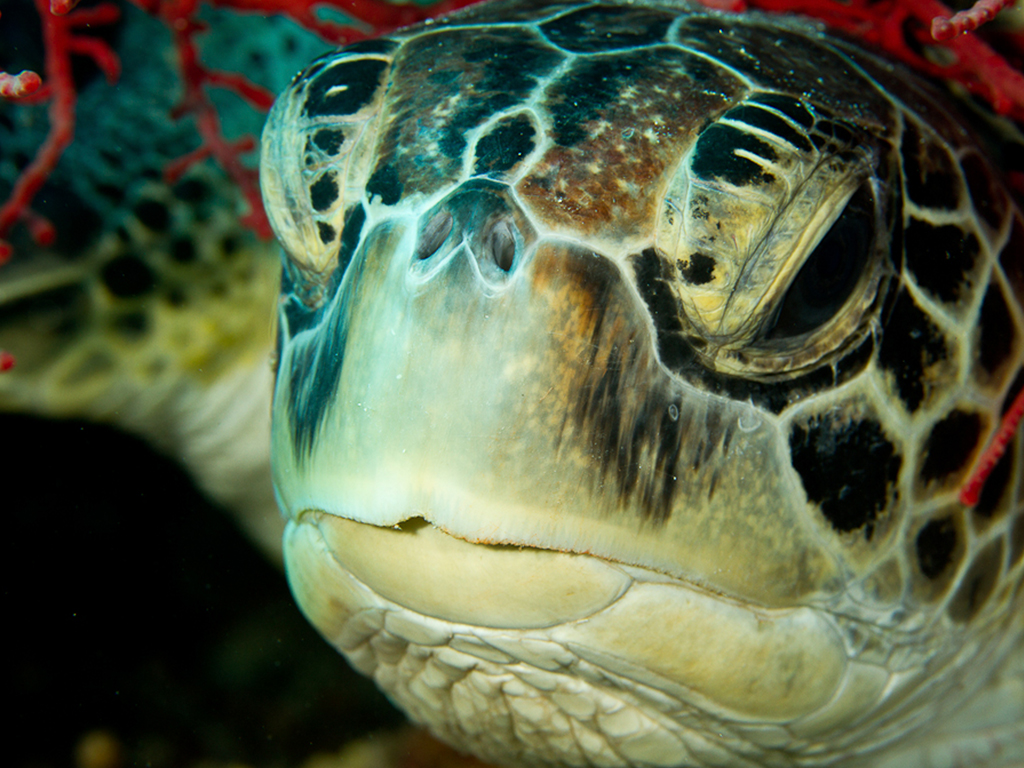
A curious Green Turtle can surprise you when you least expect it!
photo by Wakatobi guest Paula Butler

Today, all seven species of sea turtles (Green, Kemp’s ridley, Olive ridley, Hawksbill, Leatherback, Flatback and Loggerhead) are either critically endangered or threatened all around the world.
Photo by Rodger Klein
Sea turtles are among the most ancient mariners of the sea. Specially adapted to life in the water, sea turtles have been around for millions of years, going back to the age of the dinosaurs, yet their life begins on land. Digging their way up through the sand after emerging from an egg they make a mad dash for water where they will remain for life wandering the oceans. Today, all seven species of sea turtles (Green, Kemp’s ridley, Olive ridley, Hawksbill, Leatherback, Flatback and Loggerhead) are either critically endangered or threatened all around the world. The most vulnerable are females because they must return to shore to lay the eggs for the next generation to begin. Hence, they are vulnerable to predators who prey on their eggs as well as the female!
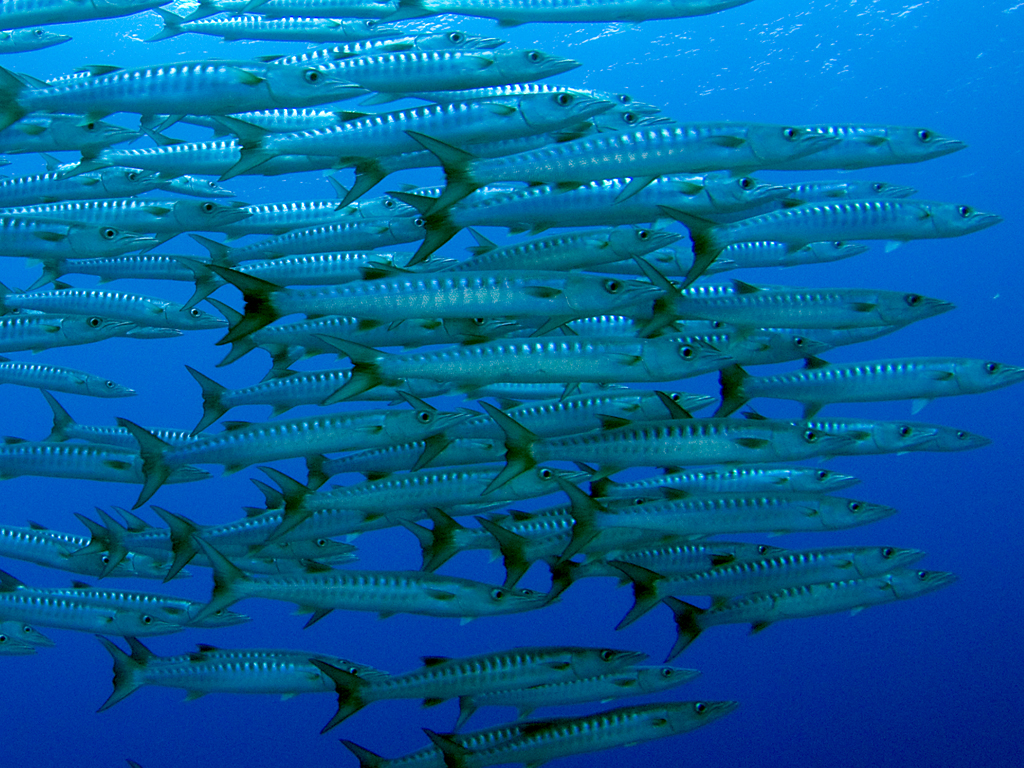
Hunting for food is a serious business for barracuda, thanks to their sharp eyesight and ability to move fast (over 40km/h). photo by Mark Snyder
Many times while we’re enjoying a turtle encounter, out and above the divers’ heads a shoal of barracudas will swirl around in formation. The shoal will often then cruise close behind the divers in the background, unnoticed, moving along with the water column.
Barracudas have a highly efficient body and are perfectly adapted as a successful predator of the ocean. Hunting for food is a serious business and thanks to their sharp eyesight, powerful jaws and their ability to move very fast (over 40km/h) they are one of the few predators at the top of the food chain. Barracudas stalk their prey, showing tremendous patience before grabbing smaller fish such as Snapper, grunts, mullets or bream. Sometimes they also attack bigger fish since, thanks to their powerful jaw, they can chop the bigger fish in half!
Other fascinating encounters might come your way unexpectedly — like the cuttlefish above feeding on the reef, expertly snapped at the perfect moment by Wakatobi guest Larry Abbott. Cuttlefish, like Octopus and squid, are “chameleons of the sea” with great abilities to change colors, pattern or even texture in order to mesmerize their prey, blend with the surrounding, and during a courtship rituals, change colors as important communication signals. As most of the cephalopods, they have specialized pigment cells in their skin called “chromatophores”, which contain coloured pigment particles that are activated by the nervous system or by hormonal signals and “iridophores”, which are reflective cells that reflect the light in different ways and cause silvery or iridescent colors to appears and make the skin appear luminous like a strobe light.
As the sun starts to go down over the vast kilometers of pristine reefs, the divers return to the boat, inspired, thrilled and accompanied by one new friend who they luckily didn’t miss. So, as you explore, occasionally do look back, up and around, and keep your eyes on the reef and out in the blue!


